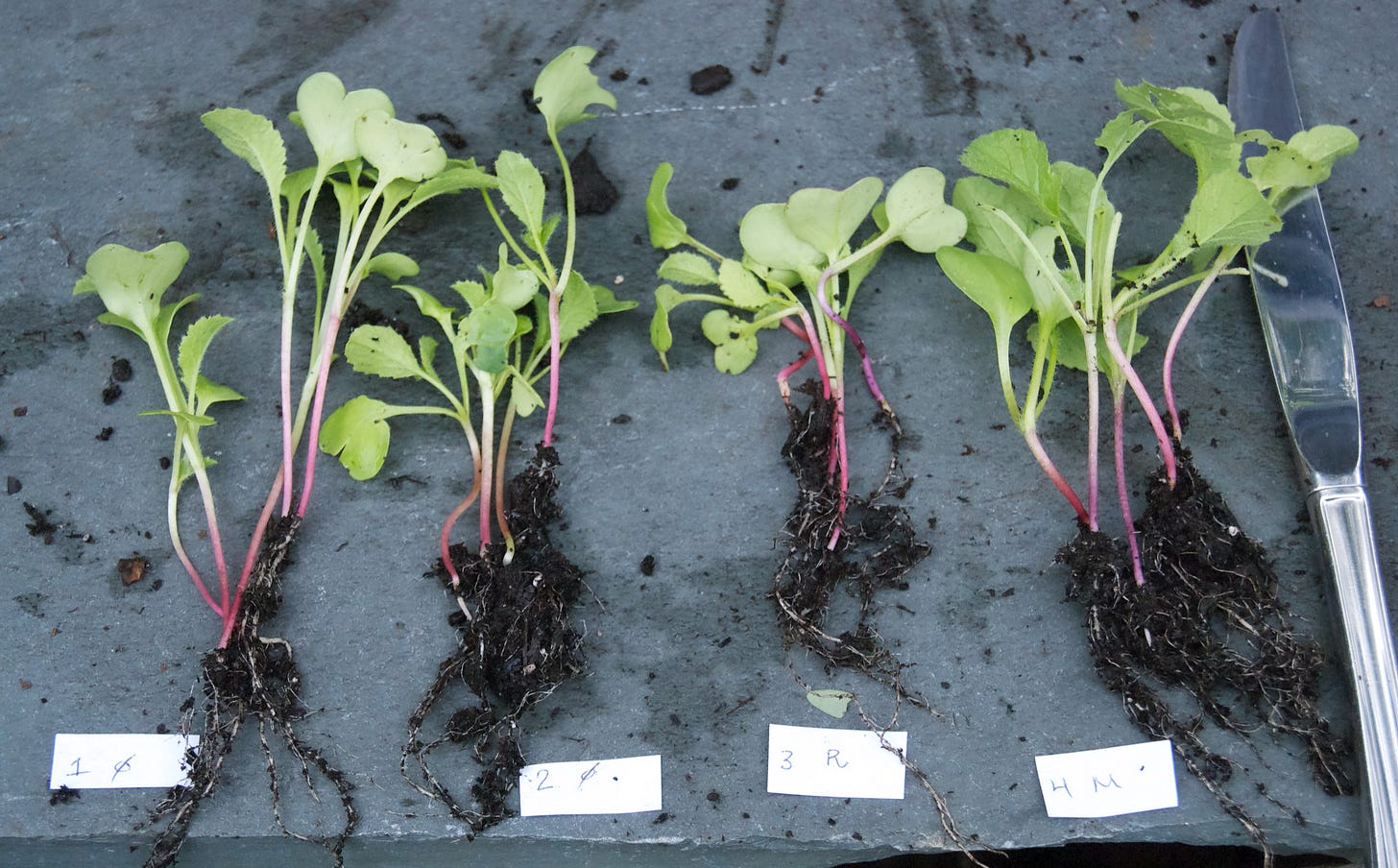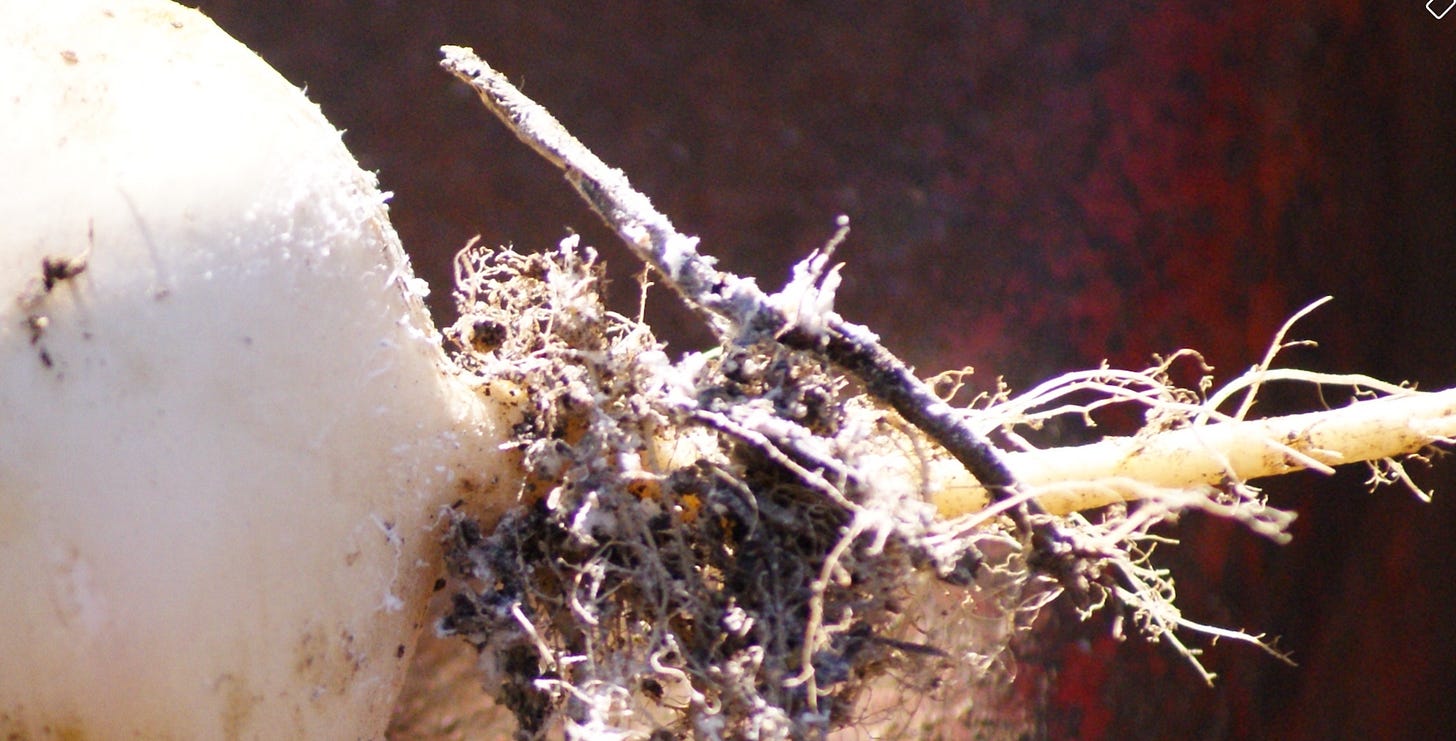When we talk about our plants, we often use short-hand pronouns. Momma might say, “Isn’t this Sweet-shrub fragrant?” and I reply, “It sure is wonderful.”
But the ‘it’ pronoun bothers me because it seems dismissive, equating my plant to an inanimate thing. And we know that plants are really three genetically different organisms that have melded over a billion years. The three cannot live independently today, but scientists can still see their distinct genetic profiles.
One of those three is the Sweet-shrub. Another is what we see as green in the leaves, chloroplast. Chloroplast capture and convert sunlight to sugar. Working by their sides are mitochondria, which turn that sugar into plant energy. Both chloroplast and mitochondria were once distinct, free-living, independent organisms. Today, we refer to them as organelles, but both are still genetically identifiable, which means that our sweet-shrub’s genetics can be broken down and viewed as three different life forms.
There are more organisms in that thing we call a plant, too. Our Sweet-shrub’s roots exude compounds that support a bunch of fungi and bacteria, all independent organisms. We call this rooty community the plant’s rhizosphere. Traditionally, this has been referred to as a symbiotic relationship. All the organisms involved influence the growth of the others. We often think of it as happening horizontally, randomly below ground. But today, we know all those interconnected organisms depend on each other.
Our Sweet-shrub isn’t an it; our Sweet-shrub is a they.

We are composed of a whole biome of microbes as well. In fact, almost half of our cells are actually genes of genetically identifiable organisms. Cells that didn’t result from the fertilization of egg by sperm, but that we picked up along the way through birth fluids and nursing, and eating. Of our body weight, .3% is not us.
I am we.
Plants cannot live without their chloroplast and mitochondria. But we can live without our microbiome. Doing so leads to all sorts of illnesses; nervous system and immune system problems, high blood pressure, asthma, and Parkinson’s disease. You and I both do things to stimulate our microbiome. I’ve just finished a round of antibiotics, so I’m drinking Keifer as I write and having beans for supper.

Plants can live without their rhizosphere but in a weakened state. Plants often depend on us to remedy diminished populations in poor soil. We hold that responsibility because, most of the time, impoverished soil has been created by us through poor agriculture or construction practices. But also because we want to grow too many plants in our small places, overtaxing and depleting the soil. Sometimes we love our kindred spirits, our plant pets, too much. Compost is a simple solution all gardeners understand.
The idea of single organisms with a microbiome or a single plant with a rhizosphere isn’t new. But scientists today ask if the assemblage that is us is more than symbiosis, more than happenstance. Are we an assemblage of genetically identifiable species working together? Evolved, interdependent as plants are?
The new term for our Sweet-shrub, or for any once thought of single organism, is ‘holobiont.’ Sweet-shrub and we are holobionts—assemblages, yes, but also a discreet, ecological community.
Science changes. In the late 80s, when I was in college, agronomy science was all about chemicals and minerals. No one ever discussed the rhizosphere. Today, there are entire courses on the below-ground relationships of all these different organisms. Soon we may understand that our Sweet-shrub and its rhizosphere are a discreet, ecological community, a being, a holobiont.
Vocabulary changes too. Since I’ve been writing a new book that’s based on memory and sentiment and feelings rather than plant science, I’ve felt a lack of pronouns. I’ve longed for a way to express my connection to plants, and I resent it when I refer to plants that I’ve loved as an ‘it.’ That word should be for wrenches and rugs and inanimate things. Plant scientist and author Robin Kimmerer suggest that we need, as her Native American language has, a pronoun for living things. In her ancestral language, that word is ‘ki’ for it and ‘kin’ for them.
With our new understanding of our sweet shrub as holobionts, we know that ‘it’ is a totally inappropriate pronoun. Our sweet-shrub is multiple organisms, so “they” works better or as Prossor Kimmerer proposes, ‘kin.’
Gardeners hold an understanding, a connection to plants; we know innately that plants are truly kin.
*This essay is my attempt to distill information from an Economist article. If you’d like to delve into holobiants, or the controversies around it, read that article, click here.




I have often wondered if our microbiome is a whole being of some kind on its own in our bellies or maybe its just the whos living in whoville???! We are Horton and better not drop it.
Jenks, I really enjoy the way you make your readers always think. I would have never considered plants having the correct pronouns.